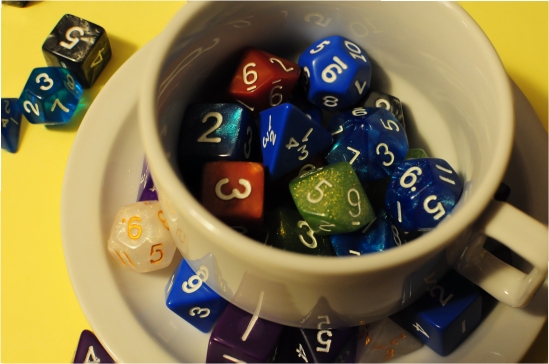Today we’re going to be talking about bracketing. Bracketing is when you take several shots of the same subject, each one using different camera settings. There are two basic reasons that you would want to use bracketing in your photos. The first is to build a safety net into your shots so that some are guaranteed a correct exposure. The second is to use the combination of shots to create a HDR (High Dynamic Range) image.
There are a few common types of bracketing: exposure, white balance, and focus. Most DSLR cameras have an option to automatically perform white balance or exposure bracketing, but focus bracketing has to be done manually.
Exposure Bracketing
Exposure bracketing is the most common type of bracketing. Many cameras will give you the option to use three shot bracketing and a lot of newer bodies will have five shot bracketing. Auto bracketing works by taking the first shot in a set at the correct exposure, the second shot under exposed, and the third over exposed. In five stop bracketing you get two extra shots, one twice as under exposed and the other twice as over exposed.
When you’re setting up this kind of bracketing, you have to set the exposure increment. The exposure increment tells your camera how many stops from normal each bracketed shot is going to be. If you set this to a full stop you would get a normal exposure, under exposed by a full stop, then over exposed by a full stop.
The photos below show three shot photo bracketing with a 1 stop bracketing. The first shot is normal exposure, second one stop under exposed, and the third one stop over exposed.
White Balance Bracketing
White balance bracketing works in a similar way to exposure bracketing. Most cameras have a three shot option and some will have a five. The first shot in the series will use the “correct” white balance, the second will have more amber color, and the third will have more blueish color. On my camera this option is only available when you use JPEG only image quality.
Like exposure bracketing, white balance bracketing needs you to set a change increment, usually in mired. Mired is a unit for expressing color temperature. The reason it is used instead of kelvin is because a change of 1000K to 2000K will appear more drastic than a change of 5000K to 6000K. Mired normalizes the scale so each increment appears to change the color by the same amount.
The images below show white balance bracketing, with the standard exposure on the left, the amber color in the middle, and the blueish color on the right. each stop was about 5 mired so the change is subtle and might require looking at the images at full resolution.



Focus Bracketing
Focus bracketing is not something that modern cameras can do for you. However it uses the same principle as exposure and white balance bracketing except it requires a tripod where white balance and exposure bracketing can be successful without.
With focus bracketing you would line up your subject with your camera on a tripod in manual mode to ensure the same exposure for each shot. Then take several shots with different parts of the image in focus, usually starting with the background and moving your way to the foreground.
The images below show my attempt at exposure bracketing, the image on the left has the background in focus, the middle has roughly the middle in focus and the right image has the foreground in focus.



HDR – High Dynamic Range
Dynamic range in photography is the ratio between the largest and smallest values of light in an image. Our eyes have a very high Dynamic range, so when we look at a scene we can make out the details in shadows or highlights. Cameras have a low dynamic range, so when you take a picture with lights and shadows in the same image, either the shadow will appear black or the lights will appear blown out.
HDR is a post processing technique for increasing the apparent dynamic range of an image. As I mentioned above, the fist step for creating HDR is to use exposure bracketing on your subject. once you have your series of images you would use HDR software such as Photomatix to combine the images into one using the properly exposed parts of each image.
A few notes about HDR: It’s a very divisive topic with many photographers; they tend to either love it or hate it with a passion. I tend to fall in the middle. HDR done right can be incredible, but I have seen many HDR shots that look overly processed or use HDR to try and prop up an otherwise uninteresting image.
HDR is not a technique that I really use so I can’t give you a full tutorial, but one of the photographers I follow, Trey Ratcliff is a phenomenal HDR photographer. He has a pretty good tutorial on his site and offers a code for purchasing Photomatix HDR software.
The photo below shows a quick HDR image put together using the exposure bracketed shots from earlier in the post. It was done using the trial version of Photomatix pro. As you can see this image has a much wider range of light with fewer highlights and shadows than any of the single shots in the set.
Focus Stacking
Focus stacking is very similar to HDR, but instead of increasing the dynamic range of light you’re increasing the depth of field. Also like HDR the first step is bracketing, but it’s focus bracketing.
This is also not a technique that I really practice. I was not able to find any software that was recommended more than others when I searched around online, but Photoshop was the most common piece of software used. These are the steps you need to follow to use this technique in Photoshop, they are slightly edited from an article on Digital Photography School.
- Create one file with all images in layers stacked on in a linear arrangement. This means that you SHOULD NOT jumble up the sequence of focused image.
- Select all layers, go to Edit>Auto align layers.
- Once the layers are aligned, go to Edit>Auto blend layers.
- Let’s the software run some processing and you will get an image with the sides slightly out of focus. This is caused by auto-alignment and auto-blending.
- Crop the image to get rid of the out of focused areas.
The image below shows focus stacking based on the focus bracketing above.
That’s it for today. For any new readers, if you like this, check out my other posts about learning photography. If you have questions that I haven’t covered yet, feel free to reach out, and I’ll make sure to cover them in the future.
Peter





Hmm I just learned a new technique for photoshop; I doubt they had something like this in CS2-CS3.
Thanks for posting this entry! I learned a lot – Man I miss playing D&D; wish I knew a bunch of people to play with; Making friends was so much easier as a kid!
LikeLike
Glad I could help.
It really was easier to make friends as a kid. I just joined a D&D group run by some work friends a few weeks ago. Before that it was probably 10 years since the last time I played.
LikeLiked by 1 person
right i am saving this in the hope that i actually learn something. I am hoping to get a DSLR for Xmas, i currently have a bridge camera, very excited, a Nikon I hope. What cameras do you rate? x
LikeLiked by 1 person
Glad I could help.
I’ve always shot with my Nikon D90, it’s discontinued now but can still be found used. It’s most similar to the current Nikon D7100, but I have friends with cameras in the Nikon 3000 and 5000 range that are very happy with them.
Hope that answers your question.
LikeLiked by 1 person
ah ok, I am looking at Nikons, maybe the 5200 but its good to get feedback from a variety of sources 🙂 thank you so much I am guessing you are a nikon fan!
LikeLiked by 1 person
Hi Peter, thanks, that is great. I didn’t realize there was different bracketing. I will have to try some things out. Thank you explaining them in simple easy terms
LikeLike
Just tried bracketing on my nikon d5300…..nice dice. I turned it on but nothing happened. I’m shooting raw only…is that a problem?
LikeLike
Bracketing will only work in P, S, A, or M exposure modes, but white balance bracketing only works in jpeg only mode.
Exposure bracketing should work in all modes. Once you set exposure bracketing in the main menu you might still need to turn it on in the info screen with the i button. Once it’s on you’ll need to take multiple shots and between each shot the shutter speed should change.
Here’s a link to a D5300 specific guide for setting up bracketing.
Hope that helps.
LikeLike
Thanks Peter, i thought I did all that………..more trial and error. I must have missed a step somewhere maybe. But thanks for the info
LikeLike
If you can’t get it working send me some pictures of your camera settings and I’ll see if I can point you in the right direction.
LikeLiked by 1 person
That would be great its probably just me doing something dumb….I’ll re read with my camera over the weekend
LikeLike
Very well explained.
LikeLike
Thanks 🙂
LikeLike